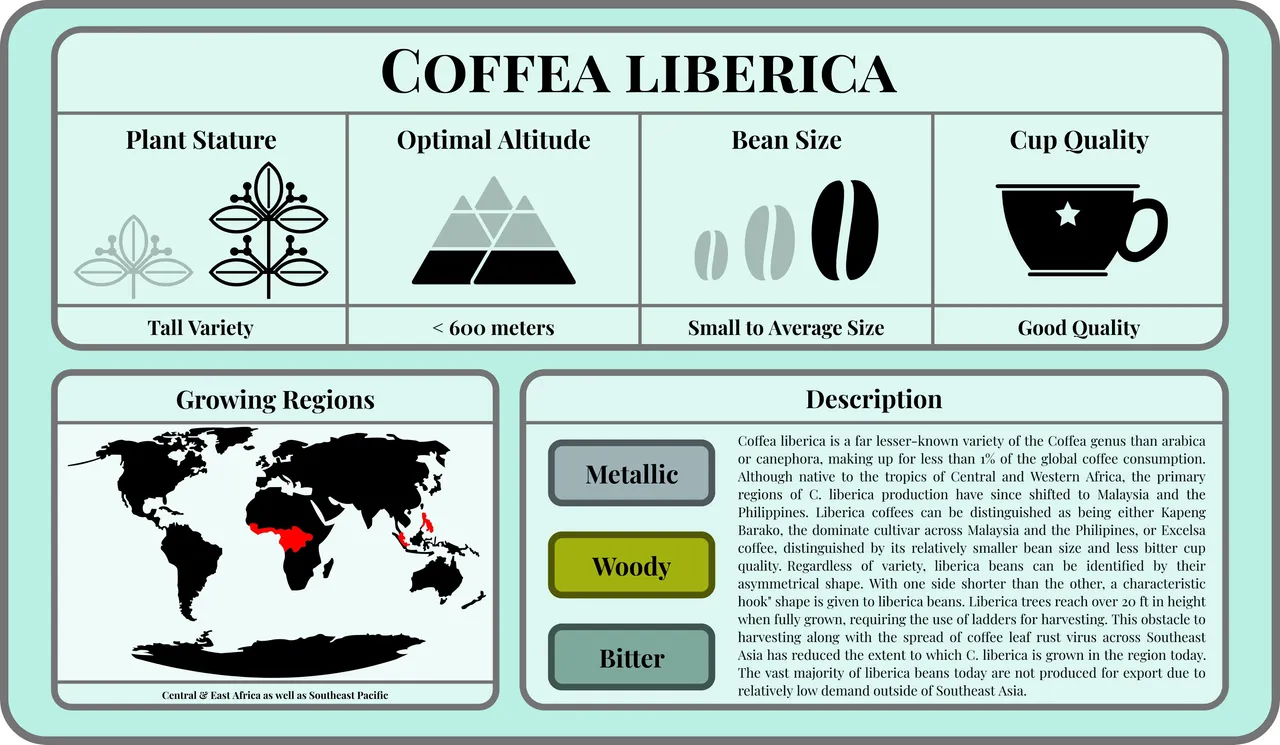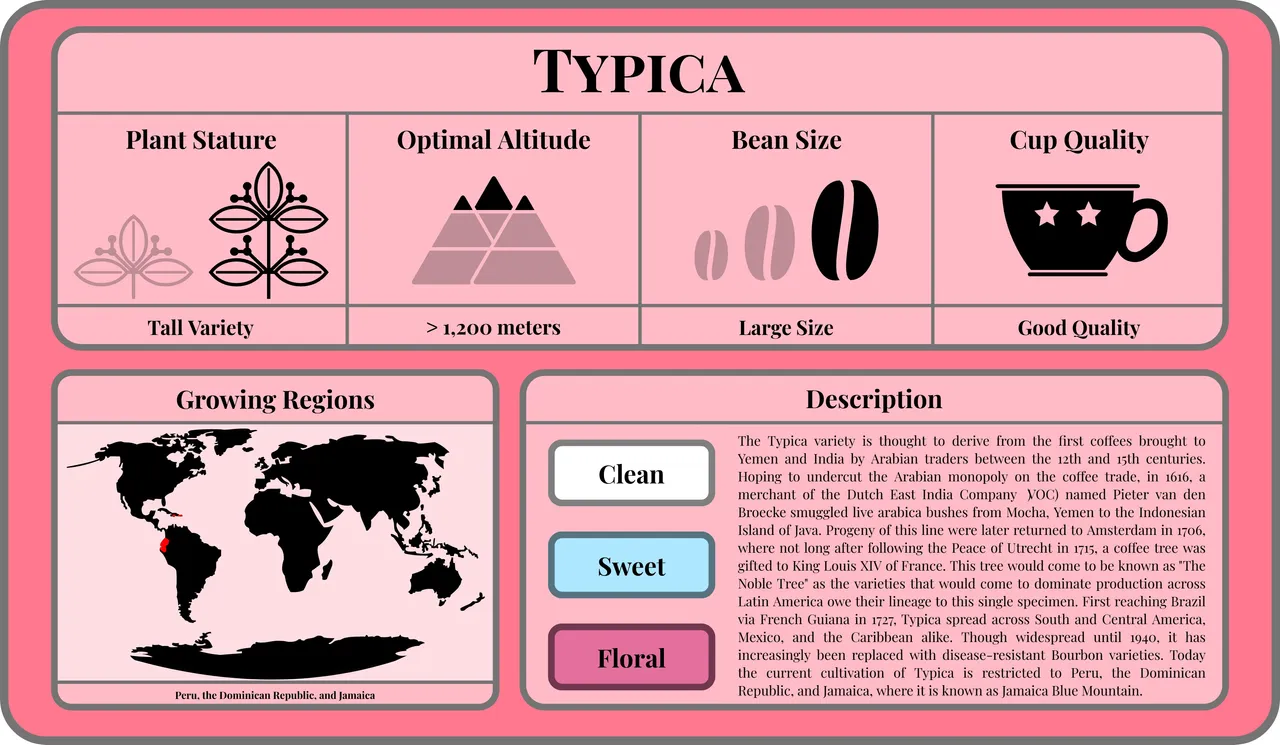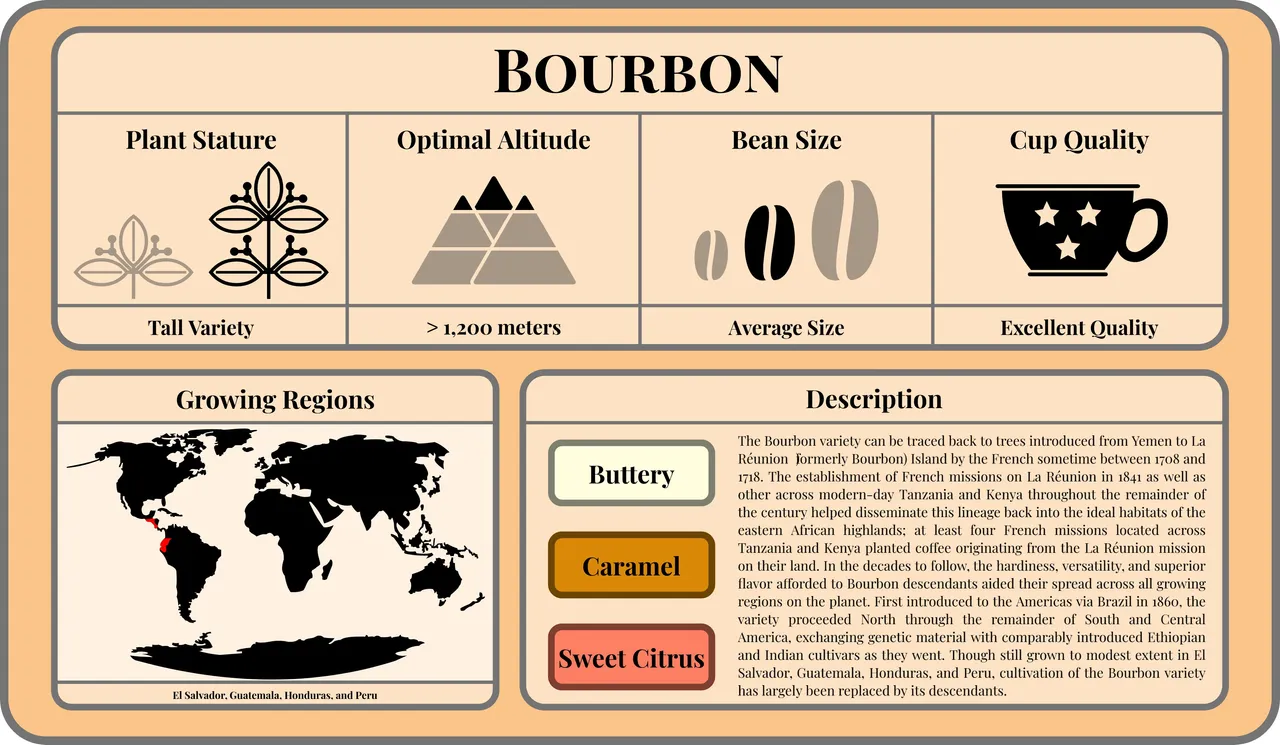}
Coffea liberica
Coffea liberica is a far lesser-known variety of the Coffea genus than arabica or canephora, making up for less than 1% of the global coffee consumption. Although native to the tropics of Central and Western Africa, the primary regions of C. liberica production have since shifted to Malaysia and the Philippines. Liberica coffees can be distinguished as being either Kapeng Barako, the dominate cultivar across Malaysia and the Philipines, or Excelsa coffee, distinguished by its relatively smaller bean size and less bitter cup quality. Regardless of variety, liberica beans can be identified by their asymmetrical shape. With one side shorter than the other, a characteristic "hook" shape is given to liberica beans. Liberica trees reach over 20 ft (~6 m) in height when fully grown, requiring the use of ladders for harvesting. This obstacle to harvesting along with the spread of coffee leaf rust virus across Southeast Asia has reduced the extent to which C. liberica is grown in the region today. The vast majority of liberica beans today are not produced for export due to relatively low demand outside of Southeast Asia.
Typica
The Typica variety is thought to derive from the first coffees brought to Yemen and India by Arabian traders between the 12th and 15th centuries. Hoping to undercut the Arabian monopoly on the coffee trade, in 1616, a merchant of the Dutch East India Company (VOC) named Pieter van den Broecke smuggled live arabica bushes from Mocha, Yemen to the Indonesian Island of Java. Progeny of this line were later returned to Amsterdam in 1706, where not long after following the Peace of Utrecht in 1715, a coffee tree was gifted to King Louis XIV of France. This tree would come to be known as "The Noble Tree" as the varieties that would come to dominate production across Latin America owe their lineage to this single specimen. First reaching Brazil via French Guiana in 1727, Typica spread across South and Central America, Mexico, and the Caribbean alike. Though widespread until 1940, it has increasingly been replaced with disease-resistant Bourbon varieties. Today the current cultivation of Typica is restricted to Peru, the Dominican Republic, and Jamaica, where it is known as Jamaica Blue Mountain.
Bourbon
The Bourbon variety's lineage can be traced back to trees introduced from Yemen to La Réunion (formerly Bourbon) Island by the French sometime between 1708 and 1718. The establishment of French missions on La Réunion in 1841 as well as other across modern-day Tanzania and Kenya throughout the remainder of the century helped disseminate this lineage back into the ideal habitats of the eastern African highlands; at least four French missions located across Tanzania and Kenya planted coffee originating from the La Réunion mission on their land. In the decades to follow, the hardiness, versatility, and superior flavor afforded to Bourbon descendants aided their spread across all growing regions on the planet. First introduced to the Americas via Brazil in 1860, the variety proceeded North through the remainder of South and Central America, exchanging genetic material with comparably introduced Ethiopian and Indian cultivars as they went. Though still grown to modest extent in El Salvador, Guatemala, Honduras, and Peru, cultivation of the Bourbon variety has largely been replaced by its descendants.



Publish0x reflink: https://www.publish0x.com?a=M7e58kDYd2
PeakD reflink: https://peakd.com/register?ref=tych021
NFTShowroom reflink: https://nftshowroom.com/?r=tych021